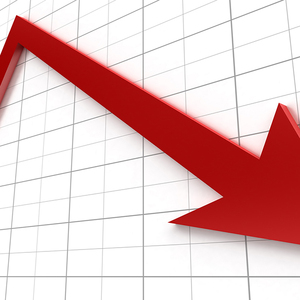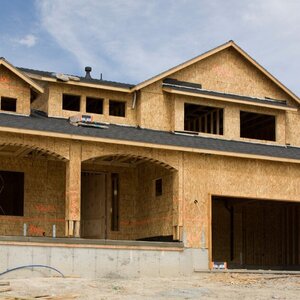The WPJ
THE WORLD PROPERTY JOURNALReal Estate Facts Not Fiction
Residential Real Estate News

U.S. Housing Supply Posts First Annual Gain in 3 Years
Residential News » Seattle Edition | By WPJ Staff | October 24, 2018 8:05 AM ET
National property broker Redfin is reporting U.S. home-sale prices increased just 2.1 percent in September 2018 compared to a year ago. The median home-sale price was $292,000 across the 171 metros tracked in the latest analysis from Redfin. September saw the smallest increase in home prices recorded since February 2012, when the median home price bottomed out at $168,000.
"Rising mortgage rates, paired with already high home prices, are giving pause to homebuyers in expensive West Coast markets," said Redfin chief economist Daryl Fairweather. "Some of these places are finally seeing the number of homes for sale surge after years of a supply drought. But buyers who earlier this year would have put in a bid on any home in their target neighborhood are now being more choosy. With home prices growing slowly, buyers want to be absolutely sure that the home they buy is a home they will stay in for years to come."
Fairweather noted that last month's low level of price growth was driven by the fact that the most expensive markets, including Seattle, Los Angeles and San Jose, California, posted double-digit declines in sales. As a result, inland metros with relatively affordable homes, like Pittsburgh and Grand Rapids, Michigan, contributed a greater share of sales to the nationwide total than they did last year, putting downward pressure on the national median sale price. In fact, 136 out of the 171 metros Redfin tracks experienced price growth greater than the national median of 2.1 percent, and half of the metros Redfin tracks experienced price growth at or above 6 percent.
For the first time in nearly three years, the number of homes for sale increased year over year, albeit slightly, up 0.2 percent from last year. National inventory growth was led by surges in softening Coastal markets like San Jose (82.7%), Seattle (54.5%), San Diego (30.7%), and Boston (9.1%).
"The number of homes newly listed in September rose 3.6 percent year over year, but buyers seemed reluctant to make offers and purchase that new inventory, as September sales fell 4.8 percent year over year," said Daryl Fairweather, Redfin chief economist.
Home sales declined in 50 of the 71 largest metro areas that Redfin tracks. In metros where high home prices have already pushed buyers to their financial limits, rising mortgage rates may be dampening demand. As of last week, the average interest rate for a 30-year fixed-rate mortgage had crept up near 5 percent for the first time since 2011. Last year at this time, rates were still below 4 percent. The biggest sales declines were again in West Coast metros, including Seattle (-27.7%), Los Angeles (-21.5%), and San Jose (-20.8%).
Across Redfin metros, the typical home that sold in September went under contract in a median of 40 days, two days faster than last year. Still, competition was noticeably less intense than last year. This September, 21.7 percent of homes sold above the list price, down from 23.8 percent last September. Likewise, the share of homes that went under contract within two weeks fell to 23.1 percent this September compared to 24.1 percent last September.
A Tale of Two Markets: The Coasts and the Heartland
"Last year and earlier this year, Seattle, San Jose and Denver were the hottest markets with homes selling in days, not weeks. These metros have now been replaced by Grand Rapids, Omaha, Nebraska, and Indianapolis as the fastest markets in the country," said Fairweather.
In San Jose, the typical home that sold in September spent 26 median days on the market, 12 days longer than last year. In Seattle, the typical home is taking a full week longer to find a buyer, at 17 median days on market.
Meanwhile, metros in the heartland are kicking into high gear. Homes in Grand Rapids are going under contract in just 13 days, 15 days faster than they were last year. In Indianapolis, which is now tied with Boston as the third fastest market, homes are finding buyers in a median of 16 days, compared to 40 last year.
"This acceleration in Midwest metros is due to increasing demand, as new residents move inland in search of affordability, without an increase in homes available for sale," said Fairweather.
The number of homes for sale in Indianapolis has been falling by more than 10 percent each year since Spring 2015, and fell 19.7 percent this September compared to last year. In Grand Rapids, homes for sale fell 2.3 percent, which is a moderate decline compared to the 5.6 percent decline in September last year, and the 21.2 percent decline in September 2016.
In the third quarter of 2018, 42 percent of the people searching for homes in Grand Rapids on Redfin.com were searching from outside of the metro area, with the largest share coming from Detroit, Chicago, Los Angeles and Washington, D.C. Indianapolis is also attracting homebuyers from more expensive cities, including Chicago, Los Angeles and the Bay Area.
As homebuyers find themselves priced out of places like Seattle and Los Angeles, they are increasingly looking to cities in the Midwest and South with more affordable homes and lower cost of living. Redfin will soon release its quarterly migration report, which tracks these migration patterns in more detail.
September U.S. Housing Market Highlights
Speed and Competition
"Rising mortgage rates, paired with already high home prices, are giving pause to homebuyers in expensive West Coast markets," said Redfin chief economist Daryl Fairweather. "Some of these places are finally seeing the number of homes for sale surge after years of a supply drought. But buyers who earlier this year would have put in a bid on any home in their target neighborhood are now being more choosy. With home prices growing slowly, buyers want to be absolutely sure that the home they buy is a home they will stay in for years to come."
Fairweather noted that last month's low level of price growth was driven by the fact that the most expensive markets, including Seattle, Los Angeles and San Jose, California, posted double-digit declines in sales. As a result, inland metros with relatively affordable homes, like Pittsburgh and Grand Rapids, Michigan, contributed a greater share of sales to the nationwide total than they did last year, putting downward pressure on the national median sale price. In fact, 136 out of the 171 metros Redfin tracks experienced price growth greater than the national median of 2.1 percent, and half of the metros Redfin tracks experienced price growth at or above 6 percent.
For the first time in nearly three years, the number of homes for sale increased year over year, albeit slightly, up 0.2 percent from last year. National inventory growth was led by surges in softening Coastal markets like San Jose (82.7%), Seattle (54.5%), San Diego (30.7%), and Boston (9.1%).
"The number of homes newly listed in September rose 3.6 percent year over year, but buyers seemed reluctant to make offers and purchase that new inventory, as September sales fell 4.8 percent year over year," said Daryl Fairweather, Redfin chief economist.
Home sales declined in 50 of the 71 largest metro areas that Redfin tracks. In metros where high home prices have already pushed buyers to their financial limits, rising mortgage rates may be dampening demand. As of last week, the average interest rate for a 30-year fixed-rate mortgage had crept up near 5 percent for the first time since 2011. Last year at this time, rates were still below 4 percent. The biggest sales declines were again in West Coast metros, including Seattle (-27.7%), Los Angeles (-21.5%), and San Jose (-20.8%).
Across Redfin metros, the typical home that sold in September went under contract in a median of 40 days, two days faster than last year. Still, competition was noticeably less intense than last year. This September, 21.7 percent of homes sold above the list price, down from 23.8 percent last September. Likewise, the share of homes that went under contract within two weeks fell to 23.1 percent this September compared to 24.1 percent last September.
A Tale of Two Markets: The Coasts and the Heartland
"Last year and earlier this year, Seattle, San Jose and Denver were the hottest markets with homes selling in days, not weeks. These metros have now been replaced by Grand Rapids, Omaha, Nebraska, and Indianapolis as the fastest markets in the country," said Fairweather.
In San Jose, the typical home that sold in September spent 26 median days on the market, 12 days longer than last year. In Seattle, the typical home is taking a full week longer to find a buyer, at 17 median days on market.
Meanwhile, metros in the heartland are kicking into high gear. Homes in Grand Rapids are going under contract in just 13 days, 15 days faster than they were last year. In Indianapolis, which is now tied with Boston as the third fastest market, homes are finding buyers in a median of 16 days, compared to 40 last year.
"This acceleration in Midwest metros is due to increasing demand, as new residents move inland in search of affordability, without an increase in homes available for sale," said Fairweather.
The number of homes for sale in Indianapolis has been falling by more than 10 percent each year since Spring 2015, and fell 19.7 percent this September compared to last year. In Grand Rapids, homes for sale fell 2.3 percent, which is a moderate decline compared to the 5.6 percent decline in September last year, and the 21.2 percent decline in September 2016.
In the third quarter of 2018, 42 percent of the people searching for homes in Grand Rapids on Redfin.com were searching from outside of the metro area, with the largest share coming from Detroit, Chicago, Los Angeles and Washington, D.C. Indianapolis is also attracting homebuyers from more expensive cities, including Chicago, Los Angeles and the Bay Area.
As homebuyers find themselves priced out of places like Seattle and Los Angeles, they are increasingly looking to cities in the Midwest and South with more affordable homes and lower cost of living. Redfin will soon release its quarterly migration report, which tracks these migration patterns in more detail.
September U.S. Housing Market Highlights
Speed and Competition
⢠Grand Rapids, MI was the fastest market, with the typical home finding a buyer in just 13 days, down from 15 days from a year earlier. Omaha, NE was the next fastest market with 14 median days on market, followed by Indianapolis (16), Boston (16) and San Francisco (17).
⢠The most competitive market in September was San Francisco where 71.8% of homes sold above list price, followed by 58.8% in Oakland, CA, 58.1% in San Jose, CA, 39.6% in Buffalo, NY, and 39.4% in Tacoma, WA.
⢠The most competitive market in September was San Francisco where 71.8% of homes sold above list price, followed by 58.8% in Oakland, CA, 58.1% in San Jose, CA, 39.6% in Buffalo, NY, and 39.4% in Tacoma, WA.
Home Prices
⢠San Francisco had the nation's highest price growth, rising 14.6% since last year to $1,425,000. Las Vegas had the second highest growth at 12.9% year-over-year price growth, followed by Salt Lake City (11.7%), Worcester, MA (11.1%), and Philadelphia (10.4%).
⢠3 out of 71 metros saw price declines in September: Honolulu (-2.2%), St. Louis (-1%), and Houston (-0.4%).
⢠3 out of 71 metros saw price declines in September: Honolulu (-2.2%), St. Louis (-1%), and Houston (-0.4%).
Home Sales
⢠Seattle saw the largest decline in sales since last year, falling 27.7%. Home sales in Orange County, CA and Buffalo, NY declined by 23.6% and 22.0%, respectively.
⢠In 7 out of 71 metros, sales surged by double digits from last year. The markets with the highest year-over-year sales growth were Miami (39.9%), Jacksonville, FL (28.1%) and Orlando, FL (26.2%). The strong sales growth in Florida this year is a response to last year's sales slump due to hurricane activity.
⢠In 7 out of 71 metros, sales surged by double digits from last year. The markets with the highest year-over-year sales growth were Miami (39.9%), Jacksonville, FL (28.1%) and Orlando, FL (26.2%). The strong sales growth in Florida this year is a response to last year's sales slump due to hurricane activity.
Housing Inventory
⢠San Jose, CA had the highest increase in the number of homes for sale, up 87.2% year over year, followed by Seattle (54.4%) and San Diego (30.7%).
⢠Philadelphia had the largest decrease in overall inventory, falling 25.4% since last September. Montgomery County, PA (-22.2%), Indianapolis (-19.7%), and Rochester, NY (-18.2%) also saw far fewer homes available on the market than a year ago.
⢠Philadelphia had the largest decrease in overall inventory, falling 25.4% since last September. Montgomery County, PA (-22.2%), Indianapolis (-19.7%), and Rochester, NY (-18.2%) also saw far fewer homes available on the market than a year ago.
Sign Up Free | The WPJ Weekly Newsletter
Relevant real estate news.
Actionable market intelligence.
Right to your inbox every week.
Real Estate Listings Showcase
Related News Stories
Residential Real Estate Headlines
- Orlando's Housing Market Continues to Slow Down This Fall
- U.S. Mortgage Originations Predicted to Hit $1.95 Trillion in 2024
- Construction Input Costs in America Uptick in September
- Global Home Price Growth Further Slows in Mid-2023
- Home Values in U.S. Begin to Slip Late Summer
- Foreclosure Filings in U.S. Spike 34 Percent Annually in Q3
- U.S. Mortgage Credit Availability Upticks in September
- Retail Market is a Bright Spot for Manhattan Real Estate
- Residential Rents in U.S. Dip in September Amid Growing Apartment Supply
- U.S. Mortgage Rates Continue to Surge in October
- Greater Las Vegas Home Sales Down 10 Percent Annually in September
- Most U.S. Homebuyers Say Buying a Home is More Stressful Than Dating in 2023
- Mortgage Applications Dive 6 Percent Last Week in America
- Despite Peak Interest Rates, Global Housing Markets Improved in Q2
- U.S. Architecture Billings Index Reports Softening Business Conditions in August
- U.S. Home Price Growth Pace Upticks Again in August
- 10,000 Residential Properties Have Negative Equity in Hong Kong
- U.S. Pending Home Sales Dropped 7.1 Percent in August
- U.S. Mortgage Rates Reach Highest Level in 23 Years
- American Bankers See Weakening Credit Conditions Through End of 2024
- Palm Beach Area Residential Sales Uptick in August
- Driven by High Mortgage Rates, Pending Home Sales Drop 13% Annually in September
- Miami Area Residential Sales Slip 13 Percent Annually in August
- U.S. Home Sales Dip 15 Percent Annually in August
- Home Flipping Transactions Down in 2023, Profits Up
- U.S. Listings Inventory Rises 4 Percent in August
- The Fed Leaves Rates Alone for Now in September
- Mortgage Applications Uptick in U.S. Amid High Rates
- Single Family Rent Growth in U.S. Drops to 3-Year Low in July
- Greater Orlando Area Home Sales Down 16 Percent Annually in August
- Home Purchase Cancellations Accelerating in the U.S.
- U.S. Construction Input Costs Uptick in August
- U.S. Mortgage Credit Availability Upticks in August
- Monthly Property Foreclosure Activity Upticks in U.S.
- Greater Palm Beach Area Residential Sales Dip 5 Percent Annually in Mid-2023
- NAR Predicts Several U.S. Housing Market Outcomes
- Demand for U.S. Housing is Dropping as Prices Rise
- U.S. Homeowner Equity Decrease by $287 Billion Over the Last 12 Months
- 1 in 5 Millennials Think They'll Never Own a Home in America
- 1 in 8 San Francisco Home Sellers Is Losing Money at Closing in 2023
Reader Poll
Marketplace Links
This website uses cookies to improve user experience. By using our website you consent in accordance with our Cookie Policy. Read More





